#software for EMR
Explore tagged Tumblr posts
Text
Get The Benefit Of EMR To Streamline Workflow

Electronic Medical Records (EMRs) are essential components of modern healthcare systems. There are numerous benefit of EMR that improve patient care, streamline workflow, and enhance efficiency. By providing comprehensive access to patient information in real-time, EMRs empower healthcare providers to make informed clinical decisions, leading to better outcomes and safety. Moreover, EMRs facilitate seamless communication and collaboration among healthcare professionals, promoting continuity of care and reducing errors resulting from miscommunication. Through data-driven insights, EMRs enable healthcare organizations to identify trends, monitor outcomes, and implement evidence-based practices, thereby improving the quality and efficiency of care delivery. Additionally, EMRs empower patients by allowing them to access their health records, communicate with their providers, and participate in their care plans actively. With built-in features for regulatory compliance and interoperability, EMR - EHRS ensure data security, privacy, and seamless integration with other healthcare IT systems. As technology continues to evolve, EMRs will remain at the forefront of healthcare innovation, driving improvements in quality, safety, and patient experience.
The Benefits Of This Software:
First and foremost, our EMR system is designed to streamline workflow effectively. By digitizing patient records and treatment plans, healthcare providers can access crucial information instantly, enabling quicker decision-making and improving overall efficiency. This streamlined workflow reduces administrative burden, allowing practitioners to devote more time to patient care.
Automation is another benefit of EMR. From appointment scheduling to billing and coding, our system automates various tasks, saving time and minimizing manual errors. This automation ensures that administrative processes run smoothly, freeing up resources for more critical aspects of patient care.
Our online healthcare portal of pain management EHR further enhances accessibility and convenience for both providers and patients. Patients can easily access their medical records, schedule appointments, and communicate with their healthcare providers online, promoting greater engagement and adherence to treatment plans.
Moreover, our software for EMR includes a letter writing feature, allowing providers to generate professional and customizable letters efficiently. Whether it's communicating with referring physicians, insurance companies, or other healthcare professionals, our software makes letter writing quick and hassle-free.
Customizability is another hallmark of our EMR solution. We understand that every pain management practice is unique, with specific needs and preferences. Our EMR for urgent care software allows providers to tailor the system to their practice requirements, ensuring a personalized and efficient workflow.
Conclusion:
To sum up, Electronic Medical Records (EMRs) represent a pivotal advancement in modern healthcare, offering a transformative solution that enhances patient care, optimizes workflow, and fosters collaboration across the healthcare ecosystem. All healthcare entities covered under HIPAA have been mandated to adopt ICD-10 diagnosis and procedure codes for billing purposes. At IMS, we understand the importance of this transition, which is why our Electronic Health Record (EHR) and Practice Management solutions are fully equipped and ICD-10 ready. By providing timely access to critical patient information, promoting seamless communication among healthcare professionals, and facilitating data-driven decision-making. EMR - EHRS empowers providers to deliver high-quality care while ensuring patient safety and satisfaction. Furthermore, the interoperability and regulatory compliance features of EMRs underscore their importance in today's healthcare landscape, enabling seamless integration and adherence to industry standards. As technology continues to evolve, the benefit of EMR will continue to play a central role in driving innovation, efficiency, and excellence in healthcare delivery, ultimately improving outcomes for patients and healthcare providers alike.
0 notes
Text
EMR/EHR - Electronic Health Records Software - CureMD

Transform your practice with CureMD's cloud-based Electronic Health Record in a way you never imagined before. With a powerful knowledge base, CureMD medical recording software is built for usability, performance, and reliability. It delivers advanced features, previously available in systems costing thousands of dollars, at a fraction of the cost.
Specialty-Focused EHR
Our specialty-focused CureMD solution gives you point-and-click selection, customization tools and much more to support your unique practice style, preferences and workflow. Let's explore what type of EHR customization we offer for different specialties.
EHR for Oncology EHR for Cardiology EHR for Dermatology EHR for Endocrinology EHR for Gastroenterology EHR for Nephrology EHR for Neurology EHR for Allergy Immunology EHR for Otolaryngology EHR for Ophthalmology EHR for Rheumatology and EHR for Urology
With CureMD software for medical records, you don't spend thousands of dollars on set up, maintenance and licensing fees, and you don't pay for workflow-driven customization or dedicated support. Learn more about CureMD EHR, visit official website: https://www.curemd.com/
1 note
·
View note
Text
#Healthcare IT#HealthTech#Medical IT Solutions#EMR Support#Healthcare Software#Telemedicine Services#Medical Data Security#Healthcare Cloud Solutions
0 notes
Text
0 notes
Text
The Clinical Benefits of Electronic Health Records Systems
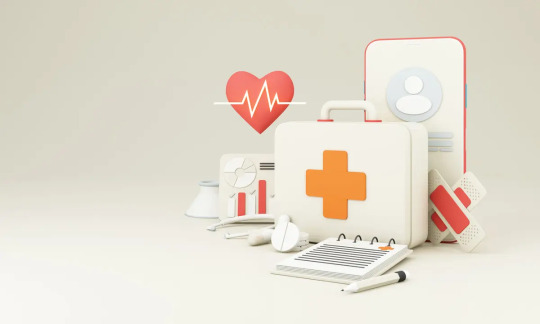
The adoption of Electronic Health Records (EHRs) began in the early 2000s, due to advancements in technology, and the need for better patient data management. In 2009, the Health Information Technology for Economics and Clinical Health (HITECH) Act was passed, which provided financial incentives through a Medicare and Medicaid EHR incentive program, later known as Meaningful Use. Between 2011 and 2015, a growing number of providers adopted EHRs to qualify for federal incentives and avoid penalties. Then in 2020, the COVID pandemic hit creating a sudden need for patients to be treated remotely. The Office of National Coordinator for Health Information Technology (ONC) estimated that as of 2020, approximately 88% of all U.S. physician offices used some form of electronic health records.
Electronic Health Records systems have provided significant benefits practice productivity and patient care. Providers gain access to patient data in real time. Everything from lab results to current medications is available at a glance. This reduces errors and supports more informed decision-making. Physicians can easily and effectively coordinate care with other providers, resulting in better patient outcomes and overall patient experience.
In addition to better patient care, EHR systems increase operational efficiency in your practice. Administrative tasks such as scheduling, eligibility, and billing insurance claims can be automated freeing up valuable time. Advanced features such as patient reminders can help reduce no-shows. Robust reporting tools that help you to analyze trends, track performance metrics, and identify areas for growth. By investing in an EHR, you’re investing in a system that can help your practice run more efficiently and prepare for future growth.
Unlock the EHR Software Benefits!
#ehrsoftware#electronic health records software#electronic health records solutoins#ehr solutions#emr systems#pronocis ehr software#emr solutions#electronic health record systems#healthtech#medical office software#top ehr software
0 notes
Text
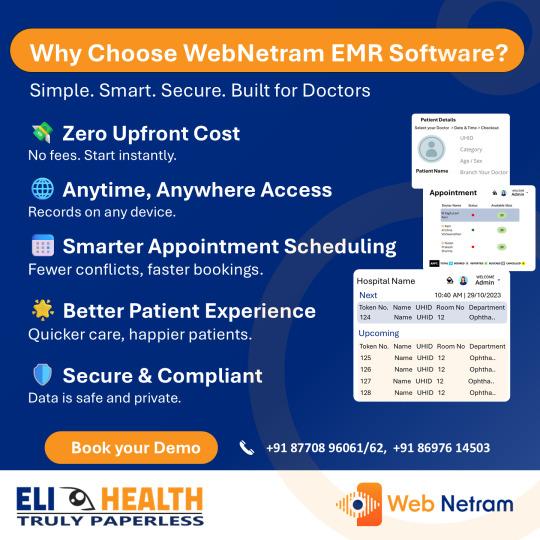
#Why Choose WebBetram EMR Software for Your Eye Care Clinic? 👁️💻#Designed with eye care professionals in mind#Webnetram EMR makes your practice faster#smarter#and paperless.#EyeCareSoftware#OphthalmologyEMR#Webnetram#EMRforDoctors#ClinicManagement#OphthalmologistTools#EMRSoftware#DoctorTech#EyeClinicSoftware#MedicalSoftware#PaperlessClinic#DigitalHealth#SmartClinic#DoctorLife#HealthcareIT#EMRIndia#ClinicAutomation#OphthalmologyClinic
0 notes
Text
The Triad Paradox: When Healing, Administration, and Business Growth Collide in Ophthalmology
#ophthalmology#emr#ehr#practice management software#healthcare crm#medical practice management software#ehr software#healthcare it solutions#medicalsoftware#medical software#patient scheduling software#medical practitioner#healthcare
0 notes
Text
EMR Software for Ophthalmology: Enhancing Eye Care Efficiency
In the fast-evolving field of ophthalmology, precision, efficiency, and streamlined patient management are crucial. Electronic Medical Records (EMR) software for ophthalmology is designed to cater specifically to the needs of eye care professionals, improving workflow, accuracy, and patient care.
What is Ophthalmology EMR Software?
Ophthalmology EMR software for ophthalmology is a specialized digital solution tailored for eye care practitioners. It helps in managing patient records, scheduling appointments, integrating imaging tools, and streamlining administrative tasks. Unlike generic EMR systems, ophthalmology-focused software includes features that support the unique requirements of eye specialists, such as visual acuity charts, optical coherence tomography (OCT) integrations, and intraocular pressure tracking.
Key Features of Ophthalmology EMR Software
Customizable Templates – Predefined templates for cataract, glaucoma, retina, and other eye conditions save time and ensure standardized documentation.
Imaging Integration – Seamless integration with fundus cameras, OCT, visual field analyzers, and slit lamps allows for comprehensive diagnostics.
Automated Workflow – From patient check-in to prescription management, automation reduces errors and increases efficiency.
Telemedicine Support – Enables remote consultations, allowing ophthalmologists to assess patient conditions virtually.
E-Prescription & Billing – Streamlined medication management and insurance claim processing improve financial workflows.
Cloud-Based Access – Secure, remote accessibility ensures continuity of care and enhances practice mobility.
Regulatory Compliance – Compliance with HIPAA and other medical standards ensures data security and patient confidentiality.
Benefits of Using Ophthalmology EMR Software
Improved Patient Care: Instant access to patient history, test results, and treatment plans enhances decision-making.
Increased Efficiency: Automated documentation, appointment scheduling, and billing reduce administrative burden.
Enhanced Accuracy: Integration with diagnostic tools minimizes errors in test interpretations and reports.
Better Data Management: Cloud-based storage ensures that patient records are secure and easily retrievable.
Choosing the Best Ophthalmology EMR Software
When selecting an EMR solution for your ophthalmology practice, consider the following:
User-Friendly Interface: The software should be easy to use for both doctors and staff.
Integration Capabilities: It should seamlessly connect with diagnostic equipment and other healthcare systems.
Scalability: Ensure that the software can grow with your practice and accommodate future advancements.
Customer Support: Reliable technical support is essential for troubleshooting and software updates.
Conclusion
Ophthalmology EMR software is a game-changer for eye care professionals, offering advanced tools to improve patient management, reduce administrative workload, and enhance clinical outcomes. Investing in a robust EMR solution tailored for ophthalmology can lead to better efficiency, accuracy, and patient satisfaction. If you’re looking to optimize your ophthalmology practice, adopting specialized EMR software is a step in the right direction.
0 notes
Text
0 notes
Text
#Clinic Management Software in Sunyani#clinic operations#Digital Healthcare Solutions in Sunyani#Electronic Health Records in Sunyani#Electronic Medical Records Software#emr software#Health Management Solutions in Sunyani#Healthcare management system#Healthcare Software in Sunyani#Healthcare Systems in Sunyani#Hospital Management Software in Sunyani#Medical Billing Software in Sunyani#Medical Practice Software in Sunyani#Medical Records Management in Sunyani#Medical Software in Sunyani#Patient Care Software in Sunyani#Patient Management System in Sunyani#Pet appointment software#Pet clinic booking software#Remote patient monitoring software#Telemedicine Software#Telemedicine Software in Sunyani#vet clinic software#Vet Software
0 notes
Text
How A Pain Management EHR Empowers Pain Management

Despite the prevalence of chronic pain, traditional methods of pain management often fall short in adequately addressing the complex needs of patients. Outdated paper records, fragmented communication between healthcare providers, and limited data analysis hinder the effectiveness of treatment strategies, leaving patients feeling trapped in a cycle of discomfort and frustration. Therefore the power of technology plays a crucial role, a Pain Management EHR offers a comprehensive solution to empower both patients and healthcare professionals in the battle against chronic pain. In this article, we will explore how a Pain EHR transcends the capabilities of basic EHR systems, offering specialized features and benefits tailored specifically for the complexities of chronic pain management.
Features Of Our Pain EHR:
Customization Options: We understand that every pain management clinic is unique. That's why our software can be easily customized to accommodate the specific needs and requirements of clinics of all shapes and sizes. Whether you need to add custom fields, modify workflows, or integrate third-party applications, EMR - EHRS has flexible customization options to ensure that the software adapts to your clinic's evolving needs.
Intuitive Interface: The intuitive interface of our EHR makes it easy to navigate and use, even for users with limited technical expertise. Designed with user-friendliness in mind, our software ensures a smooth and hassle-free experience for both staff and patients.
Ongoing Technical Support: Our pain management EMR software includes ongoing technical support from expert technicians who are dedicated to ensuring that your clinic's operations run smoothly. Whether you have questions, encounter issues, or need assistance, our support team is here to provide timely and reliable assistance.
Empower Patients:
Personalized Treatment Plans: With the Pain Management EHR, patients benefit from personalized treatment plans tailored to their unique needs and preferences. Healthcare providers can collaborate with patients to co-create treatment strategies based on comprehensive assessments and shared decision-making principles.
Remote Monitoring and Telehealth: The EHR and practice management software offers opportunities for remote monitoring of vital signs and virtual consultations, enhancing accessibility and convenience for patients. Through remote monitoring capabilities, healthcare providers can remotely track patients' progress, adjust treatment plans as needed, and intervene proactively to prevent exacerbations.
Improved Tracking and Self-Management: Patients can utilize the EHR to track pain levels, symptoms, and treatment responses over time. By logging their experiences in a centralized platform, individuals gain valuable insights into their condition, fostering self-awareness and engagement in their care journey.
Conclusion:
In conclusion, the advent of Pain Management Electronic Health Records (EHRs) represents a pivotal moment in the journey towards comprehensive chronic pain care. By bridging the gap between patients and healthcare professionals, these innovative tools offer a multitude of benefits that revolutionize the management of chronic pain. The potential of Pain Management EHRs to improve patient outcomes, provider efficiency, and overall pain management effectiveness cannot be overstated. Our software for EMR is the industry standard for pain management specialists and staff due to its thoughtful integration with critical office management modules. No other software is specifically designed for pain management, complete with pre-populated templates, forms, and other common office documents. By embracing these cutting-edge technology of EMR - EHRS, practices can elevate the standard of care, reduce medication burden, and enhance the quality of life for millions of individuals living with chronic pain.
#pain management EHR#pain management EMR software#software for EMR#EHR and practice management software
0 notes
Text
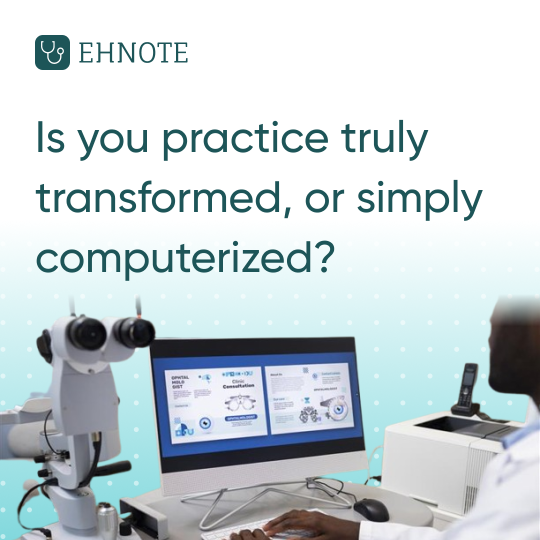
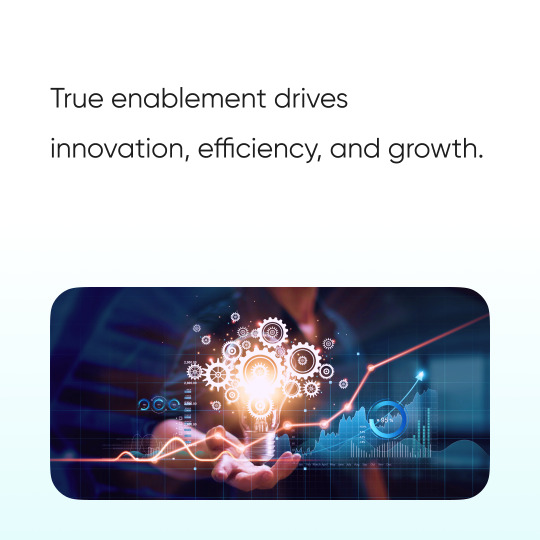
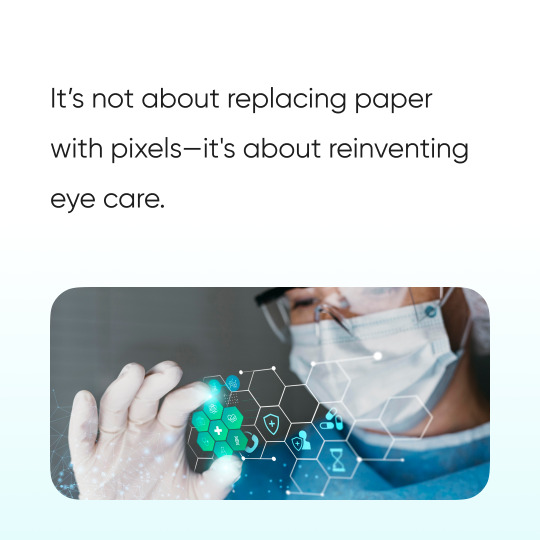
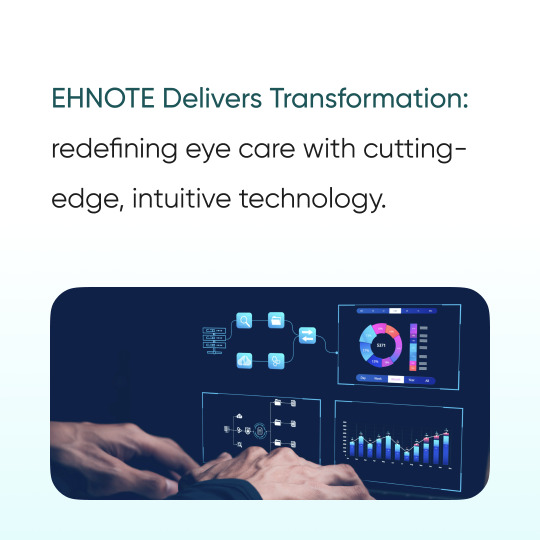
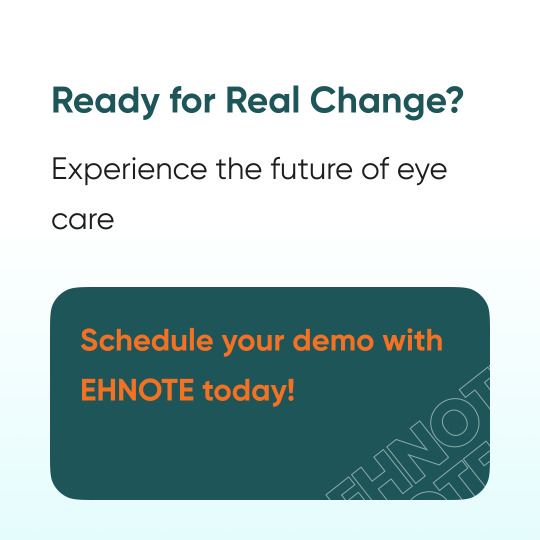
Digital or Just Computerized?
At EHNOTE, we believe digital enablement means reinventing eye care—not merely swapping paper for pixels. Our cutting-edge, intuitive technology drives innovation, efficiency, and growth.
Schedule your demo today and experience the future of eye care!
#ophthalmology#practice management software#ehr#emr#healthcare crm#ehr software#medical practice management software#ophthalmology ehr emr software#healthcare it solutions#dental ehr emr software
0 notes
Text
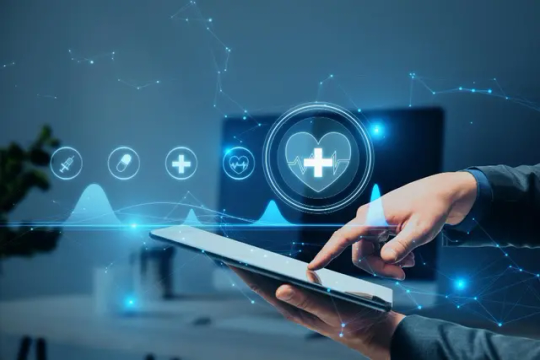
Struggling with managing patient records? Let's have a talk to check how we can provide you the best solutions for your challenges.
#EMR #medical records #medical billing # XyberMed
#benefits of electronic medical records#benefits of emr#define emr#ehr emr software#ehr/emr#electronic health medical records software#electronic medical record#electronic medical record definition#electronic medical record system#electronic medical record systems#electronic medical records#electronic medical records emr software#electronic medical records software#EMR#emr definition#emr ehr
0 notes
Text
Eye care software
Transforming Eye Care: The Importance of Eye Care Software
In today’s fast-paced healthcare environment, eye care practices require advanced tools to manage patient care efficiently. Implementing specialized eye care software can streamline administrative tasks, improve patient outcomes, and enhance overall practice efficiency. From electronic medical records (EMR) to appointment scheduling and diagnostic data management, eye care software is transforming vision care delivery.
Key Features of Eye Care Software
Electronic Medical Records (EMR) Integration Modern eye care software comes equipped with comprehensive EMR solutions tailored for vision care. This enables easy storage, retrieval, and updating of patient records. With features like image storage for retinal scans and customizable templates for eye exams, eye care professionals can maintain accurate and detailed patient information.
Patient Scheduling and Appointment Management Efficient scheduling tools help in minimizing patient wait times and optimizing clinic workflow. Eye care software provides automated reminders, reduces no-shows, and allows online appointment booking, improving patient satisfaction and practice efficiency.
Billing and Insurance Management Integrated billing systems within the software automate claims processing and ensure accurate coding for eye care procedures. This reduces administrative burdens, accelerates reimbursements, and minimizes billing errors.
Diagnostic Image Management Advanced eye care software supports the storage and analysis of diagnostic images. This feature aids in tracking disease progression, comparing historical data, and facilitating better clinical decision-making.
Telemedicine Capabilities With the growing demand for virtual consultations, many eye care software solutions offer telemedicine integration. This enables remote patient care, allowing eye care professionals to consult with patients in real-time and manage follow-ups seamlessly.
Benefits of Using Eye Care Software
Enhanced Patient Care: Streamlined record-keeping and faster access to patient data lead to more accurate diagnoses and personalized treatment plans.
Increased Efficiency: Automation of administrative tasks frees up time for patient care and reduces paperwork.
Compliance and Security: Eye care software ensures compliance with healthcare regulations (such as HIPAA) and safeguards patient data with advanced encryption.
Better Data Insights: Analytical tools within the software offer insights into patient demographics, treatment efficacy, and operational performance.
Choosing the Right Eye Care Software
When selecting eye care software, consider factors such as:
Customization: Ensure the software aligns with your specific clinical needs and workflows.
User-Friendly Interface: Opt for intuitive systems to minimize staff training time and enhance usability.
Integration Capabilities: Look for software that seamlessly integrates with existing systems like laboratory equipment and patient portals.
Scalability: Choose a solution that can grow with your practice, accommodating future needs and technological advancements.
Conclusion
Investing in the right eye care software is crucial for delivering high-quality patient care while improving operational efficiency. Whether you run a small clinic or a large eye care center, adopting modern eye care software can revolutionize how you manage patient records, diagnostics, and overall workflow. Embrace technology to stay ahead in the competitive healthcare landscape and provide the best possible eye care services.
0 notes